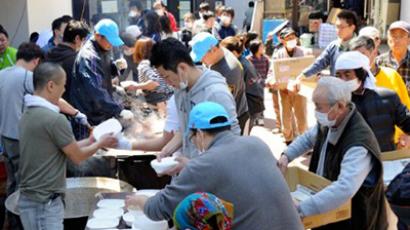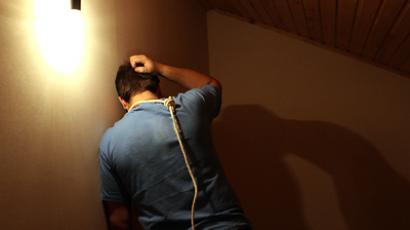Rebuilding Japan: 1 year post-disaster

One year on after the March 11 disastrous quake and tsunami, Japan is pressing ahead with reconstruction efforts, but still faces enormous challenges in overcoming country’s worst disaster since World War II.
Japan paused for a minute’s silence on Sunday at 2:46 pm, the time the 9.0-magnitude mega earthquake struck off the coast of Honshu Island, unleashing a deadly tsunami that killed almost 16,000 and left more than 3,000 missing. The world watched with admiration at the Japanese people’s discipline and resilience in coping with the aftermath. Twelve-meter-tall anti-tsunami seawalls were futile in stopping the massive wave that caused most of the damage and casualties. The cost of the calamity amounts tens of billions of US dollars. The disaster damaged some 190,000 buildings and created an estimated 24-25 million tonnes of debris. The Japanese economy looks set to return to pre-disaster levels in the coming months with the help of about $230 billion in rebuilding funds agreed in a rare show of cooperation between the government and the opposition, Reuters says."In recent history, Japan seized rapid economic expansion from the ashes and desolation of World War II, and we built the most energy-efficient economy in the world in the aftermath of the oil shock," Prime Minister Yoshihiko Noda said in an article published in the Washington Post.“Our goal is not simply to reconstruct the Japan that existed before March 11, 2011, but to build a new Japan,” he underlined. Noda praised “remarkable” progress made over the past 12 months and expressed hope that the period of difficulties will mark the start of Japan’s “fully-fledged revitalization.”In his article, the prime minister vowed that under the concept of “open reconstruction,” the worst-hit areas will stimulate new domestic and overseas investment, create jobs, drive the restoration of existing industries and enhance innovation. Such plans imply spending fantastic amounts of money.Total clean-up of the radioactive zone around the earthquake- and tsunami-affected Fukushima nuclear power plant will cost up to half a trillion dollars and many years of hard work, Arnold Gundersen, energy adviser at Fairwinds Associates, told RT.“The entire north of Japan has a public health hazard,” claims Gundersen, who has found traces of radioactive waste in Tokyo, some 250 kilometers from Fukushima.
Moreover, with about 325,000 people remaining homeless, many question whether Japan’s leadership will be able to bring about full-scale recovery. The country is seeing its sixth prime minister in five years. The previous leader Naoto Kan resigned with an extremely low approval rating in August, due to his efforts in dealing with the disaster.While much of the debris has been gathered into massive piles, very little rebuilding has begun so far. Bureaucratic delays in coordination between the central government, prefectural authorities and local officials are believed to be one of the factors that are slowing rebuilding efforts."Differences of opinion between central and local governments and even among the populations affected" have contributed to delays, Tadateru Konoe, president of the Japan Red Cross Society, said earlier this week, the Associated Press reports. "They couldn't reach any consensus. They still keep fighting with each other, looking for the best solution."
Nuclear no-go
An anti-nuclear protest took place in Tokyo on Sunday as Japanese society is growing more and more opposed to atomic energy following the catastrophe at Fukushima Dai-ichi nuclear power plant triggered by March 11 earthquake and tsunami.Following the worst nuclear disaster since Chernobyl, not a single community in Japan has agreed to restart reactors which were taken off-line. Only two of the country’s 54 reactors are now running and could also be shut down by the end of April. The government says the Fukushima plant is stable now. The tsunami knocked out the plant’s cooling system leading to the meltdown of three reactor cores. Some 100,000 residents who lived in vicinity of the plant remain in temporary shelters or with relatives. Moreover, Tokyo Electric Power Company, the operator of the crippled Fukushima plant, has been making slow progress in paying compensation to those affected by the nuclear crisis. The company has so far paid only a quarter of some 1.7 trillion yen (US$20.6 billion) in financial aid provided to the company by the Japanese government, Kyodo news agency reports.The payment of compensation is hampered by complicated procedures set by TEPCO for applying for compensation and a lack of flexibility in approving payments. The owners of property located within the 20km exclusion zone around the plant face the toughest situation, as it impossible to estimate the damage there.Prime Minister Noda acknowledged failures in the government's response to the disaster. "We can no longer make the excuse that what was unpredictable and outside our imagination has happened," he told reporters last weekend. "Crisis management requires us to imagine what may be outside our imagination."














